Themed collection Editor’s Collection: Advances in nanocrystal heterojunctions

A solution-processed Ag@ZnO core–shell nanowire network for stretchable transparent electromagnetic interference shielding application
We develop a method to prepare Ag@ZnO core–shell heterojunction nanowire networks with high EMI shielding effectiveness due to enhancement in microwave absorption via microwave-assisted interface charge transport processes.
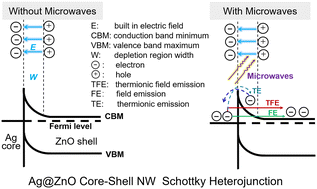
CrystEngComm, 2022,24, 6622-6627
https://doi.org/10.1039/D2CE00911K
Tunable electronic and optical properties of a type-II AlAs/GaS heterojunction: first-principles calculations
In this paper, the geometric structures and electron-optical properties of AlAs/GaS heterojunctions and Se-doped AlAs/GaS heterojunctions are calculated based on first-principles of density functional theory (DFT).

CrystEngComm, 2023,25, 3812-3825
https://doi.org/10.1039/D3CE00255A
Lattice engineering of AuPd@Pt core–shell icosahedra for highly efficient electrocatalytic ethanol oxidation
Lattice engineering of AuPd@Pt core–shell icosahedra for the exploration of the mechanism of the ethanol oxidation reaction.

CrystEngComm, 2023,25, 3655-3661
https://doi.org/10.1039/D3CE00404J
Enhanced photocatalytic activity of Ag2S particle decorated S-doped WO3 nanorods synthesized through two-stage vaporous vulcanization processes
Ag2S particle decorated S-doped WO3 nanorods formed by vaporous-assisted vulcanization exhibit high photocatalytic activity.

CrystEngComm, 2023,25, 3403-3416
https://doi.org/10.1039/D3CE00281K
High-performance UV-activated room temperature NO2 sensors based on TiO2/In2O3 composite
Synthesis of TiO2/In2O3 composite and application for NO2 gas detection at room temperature.

CrystEngComm, 2023,25, 2546-2556
https://doi.org/10.1039/D3CE00004D
Fe3GaTe2/MoSe2 ferromagnet/semiconductor 2D van der Waals heterojunction for room-temperature spin-valve devices
A 2D room-temperature, ferromagnetic crystal based 2D vdW Fe3GaTe2/MoSe2/Fe3GaTe2 ferromagnet/semiconductor 2D van der Waals heterojunction is realized with a magnetoresistance of 3.7% at room temperature and 37.7% at 2 K under 10 nA working current.
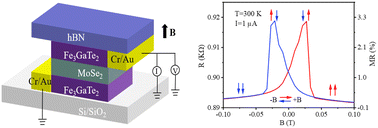
CrystEngComm, 2023,25, 1339-1346
https://doi.org/10.1039/D2CE01695H
Hierarchical Co(OH)F/CoFe-LDH heterojunction enabling high-performance overall water-splitting
Due to the serious energy and environmental issues, hydrogen generation via water splitting has been regarded as a green and promising alternative strategy to the use of fossil fuels.

CrystEngComm, 2022,24, 6018-6030
https://doi.org/10.1039/D2CE00817C
Study on the evolution from α-GaOOH to α-Ga2O3 and solar-blind detection behavior of an α-GaOOH/α-Ga2O3 heterojunction
The photoelectrochemical detectors based on the GaOOH/Ga2O3 heterojunction have a significantly improved photo detection performance compared with GaOOH and Ga2O3 detectors.

CrystEngComm, 2022,24, 1789-1794
https://doi.org/10.1039/D1CE01559A
Porous direct Z-scheme heterostructures of S-deficient CoS/CdS hexagonal nanoplates for robust photocatalytic H2 generation
Unique porous S-deficient CoS/CdS hexagonal nanoplates exhibited an outstanding photocatalytic capability for H2 production, due to excellent visible-light response, efficient Z-scheme charge separation, and abundant H2-evolving active sites.

CrystEngComm, 2022,24, 404-416
https://doi.org/10.1039/D1CE01453F
Controlled synthesis of luminescent CIZS/ZnS/ZnS core/shell/shell nanoheterostructures
We report a systematic investigation of the influence of reaction temperatures and times on the morphologies and optical properties of resulting CIZS/ZnS/ZnS quantum nanoheterostructures with “giant” ZnS shell (size >10 nm).
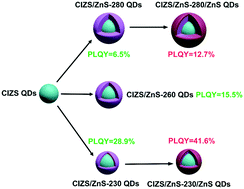
CrystEngComm, 2021,23, 6792-6799
https://doi.org/10.1039/D1CE00631B
Ultrafast and high efficiency photodegradation of dyes under visible light by Au nanocluster-promoted Zn0.5Cd0.5S nanorods
Au nanoclusters decorated on the lateral surface of ultrathin ZCS nanorods could maximize the photocatalytic activity of ZCS by PRET mechanism. This makes it possible to use less photocatalysts to degrade more recalcitrant dyes in a short time.

CrystEngComm, 2021,23, 3288-3296
https://doi.org/10.1039/D1CE00152C
3D/2D Bi2S3/SnS2 heterostructures: superior charge separation and enhanced solar light-driven photocatalytic performance
A type-II band alignment between Bi2S3 and SnS2 was established by theoretical investigation which accelerates photoinduced charge separation and improved the photocatalytic activity of the Bi2S3/SnS2 heterostructure.

CrystEngComm, 2021,23, 2276-2288
https://doi.org/10.1039/D0CE01710H
Designed synthesis of unique ZnS@CdS@Cd0.5Zn0.5S-MoS2 hollow nanospheres for efficient visible-light-driven H2 evolution
Unique ZnS@CdS@Cd0.5Zn0.5S-MoS2 hollow nanospheres with abundant active sites and enhanced light-harvesting and charge separation demonstrate efficient H2 evolution from visible-light-driven water-splitting.
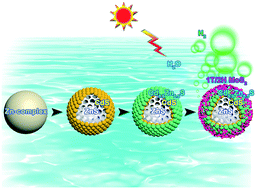
CrystEngComm, 2020,22, 2743-2755
https://doi.org/10.1039/D0CE00064G
Type I vs. quasi-type II modulation in CdSe@CdS tetrapods: ramifications for noble metal tipping
We report on noble metal tipping of heterostructured nanocrystals (NCs) of CdSe@CdS tetrapods (TPs) as a chemical reaction to manifest energetic differences between type I and quasi-type II heterojunctions.
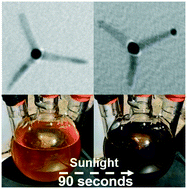
CrystEngComm, 2017,19, 6443-6453
https://doi.org/10.1039/C7CE01558E
About this collection
The combination of different components at the nanoscale continues to be a prime strategy for the development of materials with enhanced performance in a broad range of application fields. Thereby, due to the alteration of band structures, heterojunctions offer particularly fascinating possibilities for the rational design of systems with tailored properties. This Editor’s collection handpicked by Advisory Board Member Professor Georg Garnweitner (Technische Universität Braunschweig, Germany) presents most recent articles in the field of nanocrystal heterojunctions. Whilst most works focus on the synthesis of materials with superior properties for applications ranging from electro- and photocatalysis to gas sensing, electromagnetic shielding and spin valves, also mechanistic studies aiming for an enhanced understanding of heterojunction properties as well as theoretical works on the properties of heterojunction materials are included. Thus, the collection demonstrates the richness, diversity and great potentials of this research field.